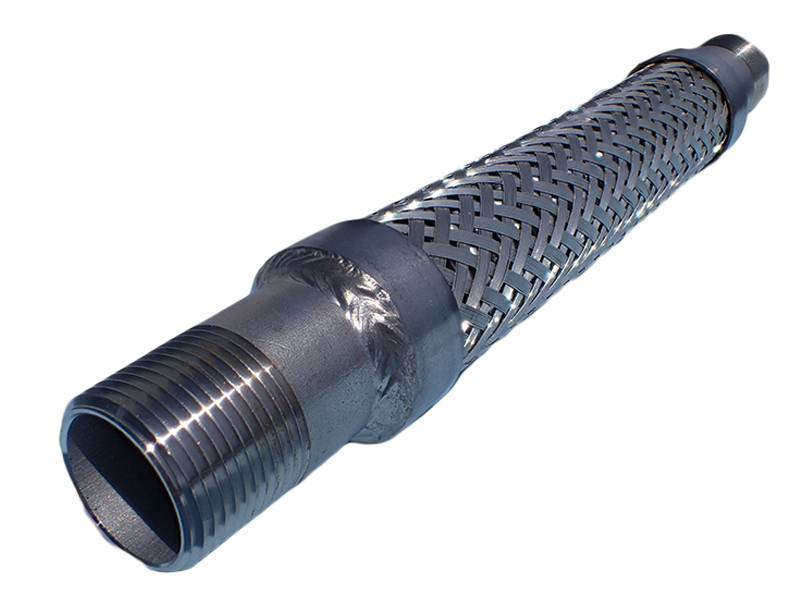
Flexible Pump Connectors
- Threaded, grooved, or flanged connections
- Reduces noise transfer
- Rated for air, water and steam use
These connectors are typically made up of corrugated stainless steel hose with a stainless steel braid overlay, available in a range of lengths and connection sizes and types. They are most often used to reduce noise transfer between vibration sources and the rest of the system, and/or to overcome alignment issues.
Available Flexible Pump Connectors
Flexible pump connectors are usually not stock items and are brought in according to your needs. Please contact us for questions, quotations, and inquiries. Any flexible pump connectors currently in stock will be listed here.
Contact Us
Do you still have questions? Are you looking for pricing information or to place an order?
Do you have questions about flexible pump connectors?
How do flexible pump connectors work?
The braided connectors cannot compress or extend, and therefore do not compensate for most thermal expansions. The most popular end fittings are carbon steel flanges and male thread ends on small diameters, but grooved ends and others are available. A floating flange on one end can help with installation on long connectors. No control units or tie rods are needed with these connectors because the braiding prevents thrust loads from being transferred to nozzles and anchors.
What are the features of flexible pump connectors?
- Threaded, grooved, or flanged connections.
- Threaded models come in in pipe sizes of ½ inch up to 4 inches.
- Flanged models come in pipe sizes of 2 inches up to 14 inches.
- Reduces noise transfer.
- Rated for air, water and steam use.
What are the applications of flexible pump connectors?
- Compensating for misaligned pipe connections or non-expansion pipe movements.
- Reducing noise or vibration transfer within a system.
- Cushioning water hammer.
What information is needed to get a quote on flexible pump connectors?
- Do you have a specific make and model in mind? If so, which?
- What is the connection size and type (MNPT, flange, etc.) required?
- What is the overall length of the connector required?
- Is there anything else we should know? (temperature, pressure, corrosive media, material requirements, etc.)
